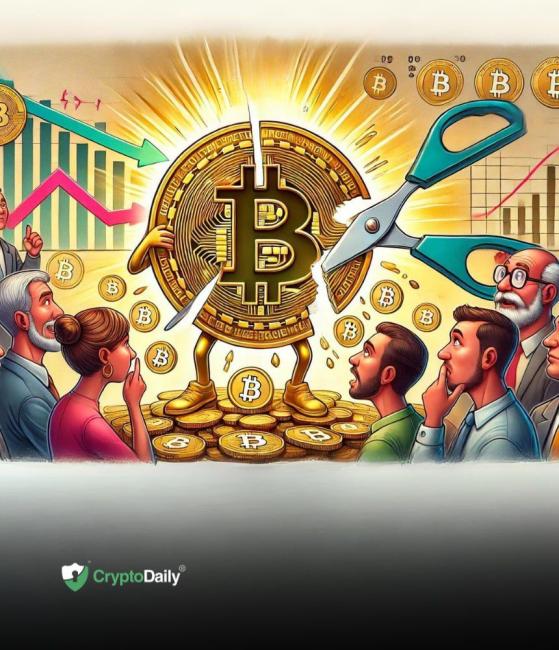Bitcoin halving can be a real head-scratcher for investors. I know I've scratched my own head trying to wrap my mind around its impact. That's why I dove deep into researching this topic, poring over the details like how the recent halving slashed miner rewards from 6.25 to 3.125 BTC.
In this article, I'll break down what Bitcoin halving actually means for investors in plain English - no crypto jargon, I promise. My goal is to share some practical insights that'll help you navigate the crypto waters and make investment decisions you can feel good about.
Key Takeaways
• Bitcoin halving cuts mining rewards in half, affecting supply and potentially driving up prices. • Past halvings led to significant price increases: 51% in 6 months after 2016, and 83% in 6 months after 2020. • Strategic investment tips include buying before halving, holding through the event, and using dollar-cost averaging. • Bitcoin's scarcity and institutional interest, like BTC spot ETFs trading over $1 billion on March 13, 2024, are reshaping the market. • Investors should stay informed about market factors, set realistic expectations, and consider long-term strategies for future halvings until around 2140.
How Bitcoin Halving Influences Market Dynamics
Bitcoin halving cuts the reward for mining new blocks in half. This event impacts the supply of new bitcoins, which can affect market prices.
Effects on Bitcoin's Supply and Demand
I've noticed a significant shift in Bitcoin's supply and demand dynamics. The amount of Bitcoin held on exchanges has hit a five-year low, pointing to decreased liquidity in the market.
This trend aligns with the growing focus on long-term holding, especially among institutional investors. Such behavior could lead to a supply squeeze, potentially driving up prices.
Bitcoin's unique monetary policy sets it apart from state-issued currencies like the U.S. dollar. Its limited supply and programmed issuance schedule tightly control new Bitcoin creation.
This scarcity factor, combined with recent developments like BTC spot ETFs recording over $1 billion in trading volumes on March 13, 2024, showcases the evolving market dynamics.
Bitcoin's scarcity and institutional interest are reshaping the crypto landscape.
Historical Performance Post-Halving
I've seen Bitcoin's price jump after past halvings. Want to know more about this trend?
Price Trends and Investor Returns
Historical data shows impressive price trends and investor returns following Bitcoin halvings. My analysis reveals a consistent pattern of growth after these events.
Halving Year
Price at Halving
Price Increase
Percentage Gain
2016
$650
51% in 6 months
Significant growth
2020
$8,572
83% in 6 months
559% increase to $56,000 in 2021
These trends show Bitcoin's strong performance post-halving. The 2020 event led to a record-breaking price surge. This year, Bitcoin hit an all-time high, unlike past halvings. Europe's top Bitcoin ETPs, like ETC Group Physical Bitcoin (BTCE), saw a 53.02% year-to-date return. These numbers paint a clear picture of Bitcoin's growth potential around halving events.
Strategic Investment Tips Around Bitcoin Halving Events
I plan my investments around Bitcoin halving events. I buy Bitcoin before the halving and hold it for a while after.
Timing Purchases and Sales
Timing purchases and sales around Bitcoin halving events can be crucial for maximizing returns. I'll share some strategic investment tips based on historical trends and economic theory.
1. Buy before the halving: I've noticed that Bitcoin prices often rise in anticipation of a halving event. Purchasing Bitcoin a few months before the halving could lead to gains as the market reacts to the upcoming supply reduction. 2. Hold through the halving: After the halving, Bitcoin prices have historically shown bullish trends. I recommend holding onto Bitcoin investments for several months post-halving to potentially benefit from price increases. 3. Monitor mining incentives: Higher Bitcoin prices after a halving help incentivize continued mining. I keep an eye on mining activity as it can indicate the overall health of the Bitcoin network. 4. Consider long-term strategies: With potential halvings occurring until around 2140, I view Bitcoin as a long-term investment opportunity. Planning for future halvings can be part of a broader investment strategy. 5. Stay informed about market factors: While halvings often lead to price increases, other factors also affect Bitcoin's value. I stay updated on market news, regulatory changes, and technological developments to make informed decisions. 6. Use dollar-cost averaging: To minimize the impact of short-term price fluctuations, I often use a dollar-cost averaging approach. This involves regularly buying small amounts of Bitcoin over time. 7. Set realistic expectations: While Rob Chang has noted historical price increases post-halving, I don't expect immediate or guaranteed gains. I prepare for potential volatility and adjust my strategy accordingly. 8. Consider selling some holdings post-halving: If prices rise significantly after a halving, I might sell a portion of my holdings to lock in profits. This can help balance my portfolio and reduce risk.
Conclusion: Preparing for the Next Bitcoin Halving
Bitcoin halving shapes the crypto market's future. I've seen its effects on supply, demand, and prices firsthand. Smart investors plan ahead for these events. They watch market trendsand adjust their strategies.
As we look to the next halving, staying informed and flexible will be key to success in the ever-changing world of cryptocurrency.
Disclaimer: This article is provided for informational purposes only. It is not offered or intended to be used as legal, tax, investment, financial, or other advice.





